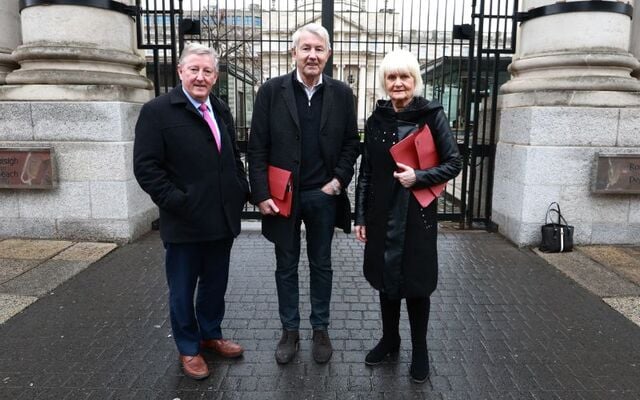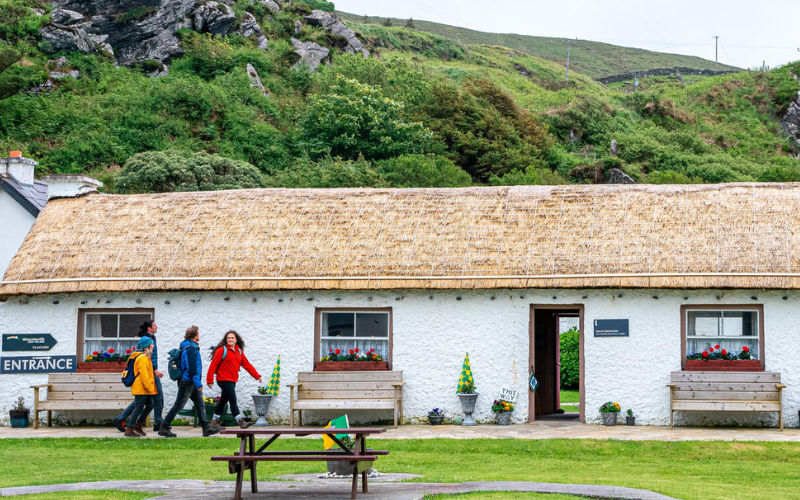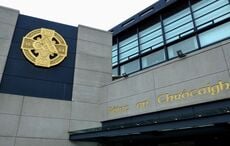Plans to form the next Irish Government are nearing completion, according to reports in the Irish media today, January 14.
In Ireland's General Election in November, no one party fielded enough candidates to win the majority of the 174 seats in the next Dáil Éireann, setting Ireland up for another coalition government.
Fianna Fáil won the most seats (48) in the 2024 General Election, while Fine Gael won the third most seats (38).
Sinn Féin won the second most seats (39), but both Fianna Fáil and Fine Gael, who were a part of the outgoing coalition, vowed not to go into power with Mary Lou McDonald's party in the next government.
While it was expected that Fianna Fáil and Fine Gael were going to go into coalition again, together they still did not reach the majority 88 seats needed to win control of the Dáil. The parties have thus turned to some Independent TDs, who overall won 16 seats, to get them over the line.
On Tuesday, the Irish Times reported a deal between Fianna Fáil, Fine Gael, and the Regional Independent Group (RIG) had been reached.
As part of the deal, Galway East TD Seán Canney and Galway West TD Noel Grealish, both of the RIG, will hold two super junior ministries, meaning they will sit at Cabinet.
Meanwhile, other RIG members Sligo–Leitrim TD Marian Harkin and Longford–Westmeath TD Kevin ‘Boxer’ Moran will hold junior ministerial roles.
Junior Ministers, also known as Ministers of State, are not actually members of the Cabinet, but they help Government ministers in their parliamentary and departmental work.
The Irish Times notes that the RIG had been hoping for a full Cabinet seat, but Fine Gael and Fianna Fáil were resolute that no such offer would be forthcoming.
The Irish Times added that it is anticipated that the full Cabinet positions will be split between Fianna Fáil (eight seats) and Fine Gael (seven seats).
As leader of Fianna Fáil, Micheál Martin is expected to become the next Taoiseach. The current Tánaiste and Minister for Foreign Affairs previously served as Taoiseach from June 2020 through December 2022.
A programme for government document is expected to be circulated to TDs on Tuesday evening or Wednesday morning.
Fianna Fáil and Fine Gael are set to hold parliamentary party meetings on Wednesday where the document will be examined and debated before moving on to party membership.
Fianna Fáil is also set to hold a special Ard Fheis in Dublin on Sunday to ratify the new programme for government.
The developments on Tuesday come before the Dáil is set to sit next week on January 22.
Independent TD Michael Lowry told the Irish Times on Tuesday that discussions have been a "long and painstaking process."
He said: "We are happy that our most of our policy document is reflected in the programme for government. We have agreed structures in terms of liaison with our group and the government parties.
“The document will be presented tomorrow afternoon [Wednesday] for consideration and approval within our group, and in the Fine Gael parliamentary party and the Fianna Fáil parliamentary party.
“We put a lot of time into this. Contrary to media speculation about this being a parish pump thing, we were conscious of the national issues and fed in to all of those.”
Lowry said there has been “agreement in principle” on ministerial positions.
How is a coalition government formed in Ireland?
In Ireland, the Government is the group of senior ministers responsible for the executive power of the State, meaning that the Government is responsible for giving effect to laws.
After a general election, the Dáil (the Irish parliament) elects the Taoiseach, the head of Government. Normally the Taoiseach is the leader of the largest party in the Dáil. The Taoiseach then nominates a deputy (the Tánaiste) and a cabinet of ministers who take charge of the departments of government.
Citizen's Information explains that if, after a general election, no party can get the support of the majority of the members of the Dáil, two or more parties may agree to work together as a coalition government.
The coalition parties agree on who will be nominated as Taoiseach. Usually, it is the leader of the larger party. In recent years, the leader of the smaller party has been usually nominated as Tánaiste.
The ministerial portfolios are then shared between the parties. Usually, the larger party is given a greater number of portfolios. The leader of each party decides which elected members of the party to give those portfolios to.
The coalition government remains in power for as long as it keeps the support of the majority of the Dáil. If the coalition parties find that they cannot agree and can no longer work together, the Taoiseach may advise the President to dissolve the Dáil.
Article 28 of Bunreacht na hÉireann (the Irish Constitution) sets out the composition of Government. The Constitution states that the Government must not be smaller than seven members or larger than 15 members.
The members of the Government must be members of either Dáil Éireann or Seanad Éireann. There cannot be more than two members of Seanad Éireann appointed to the Government. The Taoiseach, the Tánaiste, and the Minister for Finance must be members of Dáil Éireann.
The Taoiseach also appoints an Attorney General to advise the Government on legal issues. The Attorney General is not a member of the Government but they traditionally attend Cabinet meetings.




Comments